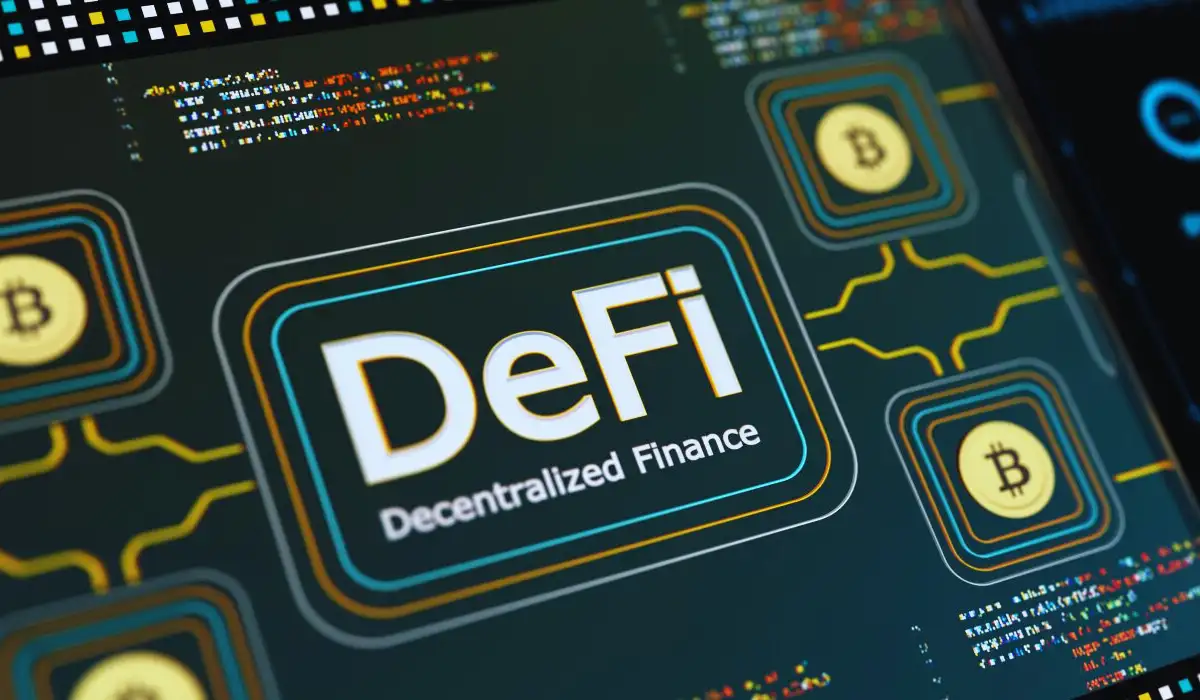Decentralized finance (DeFi) is an emerging person-to-person payment platform built by utilising cryptocurrencies and blockchain, which lets the users, who might be an individual or a company, execute a trade directly without an external entity. The fundamental concept behind developing the DeFi platform is to remove these external intermediaries, such as banks and brokerages, to reduce the transaction fee and processing durations.
There are many rules defined by the SEC (the Federal Reserve and Securities and Exchange Commission) regarding the banks and other financial institutions that make linkage to capital and financial services for the consumers to depend upon, but with the coming of de-centralised finance platforms, there is no need for the consumers to rely on these centralised economic systems, enhancing autonomous transactions directly between people.
The DeFi system is widely accessible, and it doesn’t matter where you are or what your financial status is; the only thing that matters for you to avail of the DeFi service is that you need to have a strong internet connection. All the transactions made using DeFi platforms are recorded on a ledger, making it a transparent and accountable system while making transactions. Even though DeFi platforms are emerging, they have been in waves for years. In 2021, it was reported that there were $80 billion in total value locked in DeFi protocols.
Factors to consider while finding the best Fit DeFi platform

You should choose a DeFi platform that optimizes the outcome according to you while mitigating the risk. In order to find the right DeFi platform that does this, there are some factors to keep in mind, such as:
1. Security
Security is the most essential factor to ensure while choosing any platform while money is involved. Look for a DeFi platform that shows a reliable security record by researching its reviews and checking if they have certifications acquired by conducting timely audits, which will be available or mentioned on their websites.
2. Interface experience
Make sure you are choosing a DeFi platform that has a user-friendly interface that lets you navigate easily. Also consider the medium of the interface, whether it is a mobile-based application or a web-based one. Try to choose platforms that offer both. Platforms that offer both mobile and desktop access will make your experience more convenient at all times. Check out reviews of active or previous users on how their usage on the platform was, customer engagement, and satisfaction provided by the platform.
3. Liquidity
Check on the liquidity of the platforms and compare them with each other. The slippage rate and liquidity rate are inversely related, which means that the higher the liquidity is, the better the trading condition will be, which leads to lower slippage. So choose the DeFi platform that has the highest liquidity. You can identify the liquidity of each platform by checking out the volume of transactions made on the platform.
4. Fees
While choosing the DeFi platforms, you should compare all the charges it will cost you for each activity, such as transaction fees and withdrawal fees. Carefully evaluate and compare these platforms and their fee structure.
5. Community and support
Choose the platform with community support, as a strong community will offer expert guidance.
6.Legal and regulatory affairs
Make sure that the platform you choose follows all the legal regulations by researching the reputation of the platform. If the DeFi platform you choose is violating any of the regulatory or legal policy or legal risks involved, this might also potentially affect you.
Industry-leading decentralized finance platforms for you to consider
1. Uniswap
Uniswap is one of the acclaimed decentralized exchange platforms (DEX) known in the DeFi market. Uniswap consists of the AMM protocol (automated market making); this is an innovative protocol that, instead of depending on the buyers and sellers, follows this AMM protocol, which utilizes the algorithmic mechanism to provide digital trading solutions. Through liquidity pools, the AMMs committee sustains the liquidity in the DeFi market. Uniswap fully functions on the Ethereum blockchains, which allows all of its users to trade cryptocurrency from anywhere around the world without depending on a third party to initiate the transaction.
Uniswap rapidly gained traction from its launch in November 2018 and remains the most popular DEX in the market, even though many competitors such as Curve, SushiSwap, and Balancer have arrived in between. The token provided by Uniswap called the UNI token, which lets the stakeholders in the community have a say while changing the protocols and community changes, was even ranked as the largest fourth crypto by market capitalization on coin-based three years ago (2021) with a market cap of over 18 billion dollars.
The liquidity pool provided by Uniswap is one of the key features of the platform. A liquidity pool is the liquidity offered by the users by investing the tokens into the pools and generating revenue from trading activity. The mechanism of how the trade happens is by using smart contracts to enable trades directly from the liquidity pool without the need for buyer and seller alignment. The customer maintains authority over their funds, which reduces the risk of hacks while doing a centralized transaction. There isn’t even a need for an account to trade or provide liquidity in Uniswap.
2. Aave
Aave is also a decentralized finance protocol (DeFi) that lets you provide and obtain a diverse variety of cryptocurrencies across 20 different assets as collateral. One of the notable factors of Aave is its easy-to-use interface. Just like Uniswap, Aave also functions on the Ethereum blockchain. The token of this protocol is called AAVE, which is a token that acts as a governance token for the stakeholders to get a say in the protocol changes. Lenders earn interest by providing liquidity to the market, while borrowers can access loans from liquidity pools by collateralizing their crypto assets.
Aave also provides loans without any collateral for a short period of time called flash loans. This opens a door for the trader to a risk-free trading opportunity. Aave utilizes adaptive interest rate pricing, where the rates are varied depending on supply and demand. There are options for the user to choose between different interest rates and lend according to their needs and financial requirements. The users are able to invest in liquidity pools and use them as loans when required.
3. Compound
Compound is a leading algorithmic decentralized blockchain protocol operating on the Ethereum network. The objective of Compound is to let the users earn returns on their digital investments. Once the user receives cTokens in return for their investment made by adding their crypto into the platform liquidity pools. The token symbolizes the stake of the user in the pool. The user can also convert back this cToken into the crypto they gave to the compound initially along with the interest.
The interest rate is based on the algorithm depending on the supply and demand. It is not just tokens that the compound provides; it also lets the user obtain collateralized financing from its liquidity pools. The compound also has a token called the COMP token, which lets the stakeholders have a say in the governance and protocol change.
4. Pancakeswap
Pancakeswap is a decentralized cryptocurrency exchange platform launched in 2020 that aims to simplify trading on the blockchain by using automated market maker (AMM) models. The Pancakeswap lets you trade cryptocurrencies with minimal charge and rapid processing as it is built on the Binance smart chain (BSC). Pancakeswap can be accessed by all the users easily as they have a beginner-friendly interface. With Pancakeswap, you can have a decentralized lending and borrowing experience by enabling the users to provide liquidity to diverse trading pairs.
This generates rewards in transaction fees and CAKE tokens and incentivizes participation in the platform’s crypto-earning ecosystem. The platform’s yield farming feature further amplifies earnings by allowing users to stake the LP tokens. Expanding beyond the Binance smart chain, pancakeswap supports multiple blockchains, enhancing versatility and reach. Users can also swap tokens seamlessly without intermediaries, ensuring asset control and privacy—a key advantage of DeFi. Pancakeswap’s community approach empowers users to contribute to decisions on community and development.
5. Curve finance
Curve Finance is a decentralized exchange platform to facilitate seamless stablecoin transactions. By concentrating on stablecoins, the curve effectively mitigates price fluctuations, ensuring stable and predictable trades. The platform supports an array of prominent stablecoins such as USDC, DAI, and tether (USDT) and is developed to optimize trading between these assets. This targeted approach yields benefits, including reduced volatility and expedited transaction processing. The automated market maker (AMM) model helps to decrease slippage, allowing traders to trade without much impact on the price. There are CRV tokens that let the stakeholders participate and get a say in the governance and change in the policies of the platform.
Chart comparing the top 5 beginner-friendly Defi platforms
| Name of the platform | Major Function of the Platform | Supported chain | Beginner friendly interface | Yield potential | security |
| Uniswap | DEX | Ethereum, others | 4/5 | 3/5 | 95/100 |
| Aave | lending/borrowing | Multi-chain | 4/5 | 4/5 | 98/100 |
| compound | lending/borrowing | Ethereum | 5/5 | 3/5 | 96/100 |
| PancakSwap | DEX, yield farming | BSC, Ethereum | 5/5 | 4/5 | 92/100 |
| Curve finance | Stablecoin DEX | multi-chain | 3/5 | 5/5 | 97/100 |
Tips while using DeFi
- Keep on researching, and look for whitepapers, team backgrounds, and reviews from the users.
- Use reputed platforms while choosing your platform with a proven track record.
- Stop putting all your investments in one place and split it into multiple investments, so if one ends up in a loss, you will always have a backup.
- Use two-factor authentication while the payments are involved, which protects your wallet, provides you with security, and safeguards your account against unauthorized entries.
- Always be skeptical and double-check the URLs; there are many cyber attacks around the world, such as phishing scams, and be cautious of projects that are too good to be true.
- Follow up on the website of your chosen DeFi platform to stay updated on their privacy policies and updates.

